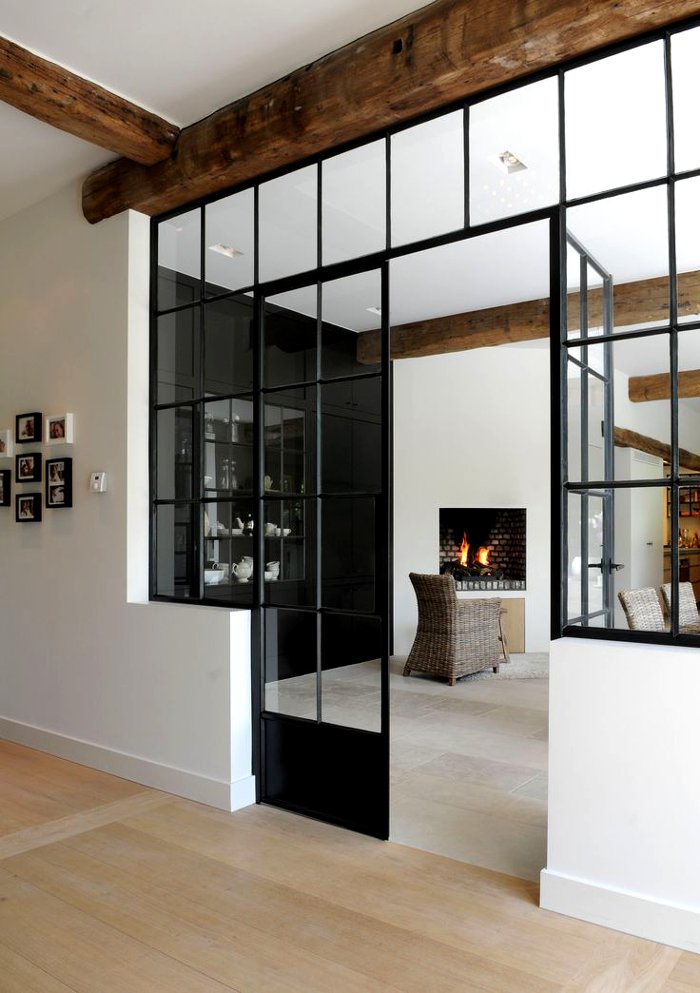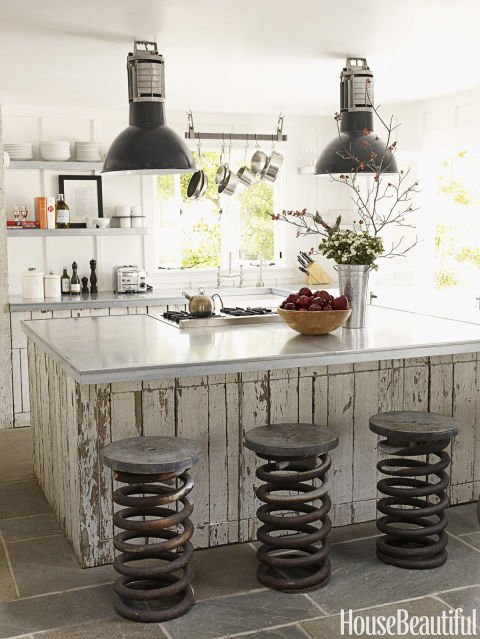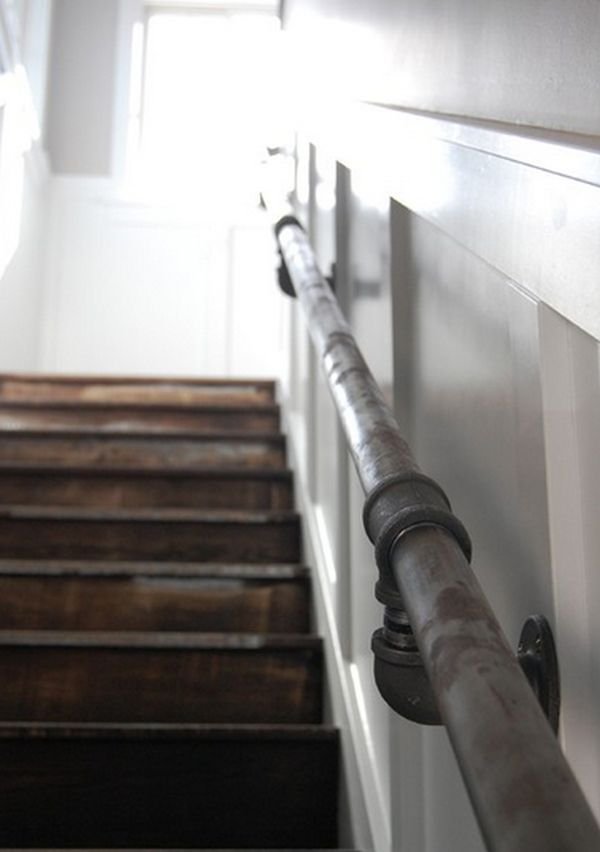
It’s time for a new addition to the Style Series…I’m very excited to introduce you to industrial design! Industrial interior design is a fabulous style that is here to stay! It can be polished and expensive, it can be rough and cost-effective, masculine, feminine…you name it, industrial style can handle it! A close relative of minimalist design, industrial focuses on the beauty and simplicity of raw building materials. Industrial style embraces the basic structures of an interior and makes beauty out of the things that we typically try to hide.
What is Industrial Interior Design?
Industrial interior design started as necessity, not really as a style. Many larger industrial buildings were (and still are) being renovated into apartment or loft spaces. Covering high ceilings and massive expanses adds up quickly in a budget, so landlords and investors embraced the raw materials within their spaces, rather than covering them up. We caught on and realized the simplicity and beauty of raw building materials, and the industrial style was born! Industrial spaces use building components (cement block, wood, pipes, ducts, among others) as the finishing material. You can add these sorts of objects to an already finished space or highlight the exiting raw materials in a space your next renovation. Industrial furniture and fixtures tend to have a vintage or reclaimed feel. Despite its reclaimed, bare bones look, industrial interior design tends to look very high end.

A Budget-Friendly Option
I’m not going to lie here, I’m planning a basement renovation on a budget. And we have decided to go for an industrial look because (a) I think it’s gorgeous and (b) it’s budget friendly. The use of raw materials allows me to skip a few steps in the renovation budget and timeline. Exposed ceiling joist? Yes please! That just saved me a few thousand on insulation and drop ceiling. Plywood floors? OK! I have to lay plywood anyway, why not stop there? If we weren’t planning on making our space into a playroom some day, we could even get away with staining the existing cement and not laying any floor down! Industrial interior design can be as expensive or as cheap as you want it to be—it’s the only style that allows you to get away with skipping finishing materials in a finished space while still creating a high end look.

Pulling Off the Look
So…how do we pull of the industrial look in a space without it looking like an unfinished basement or like everything came from the neighbor’s curb? You’ve got to (1) plan carefully, (2) stick to your plan, (3-4) carefully use texture and accessories to finish off the look. Take a look below:
Step 1: Careful Planning
First things first, you’ve got to be all in! You can’t just drywall walls, leave the ceiling open, and call it a day. You have to have a cohesive style within the space. For example, in my basement, we are putting up drywall, but we are incorporating large cement floor to ceiling beams, and leaving the floor joists above open (rather than putting in a drop ceiling). You have to think through all parts of the design to have a cohesive look, otherwise it will look like you just didn’t finish your renovations yet.

Step 2: Keep Your Eye on the Ball
You cannot—you must not—get distracted by any other styles when going for the industrial look. There are more polished, rough, chic, or masculine forms of industrial design, but you are going to run in to troubles if you don’t fully commit. I’m a huge fan of inspiration boards—make one and take it everywhere with you. Don’t you dare make a purchase or design choice without it!

Step 3: Embrace Texture
The color scheme for industrial design tends to be very neutral. Pops of color happen sometimes, but generally colors run along the lines of greys, blacks, whites, sometimes browns. So it’s crucial to incorporate textures for visual interest. Wood, metal, fabrics, bricks, glass, baskets, stone are just a few great textures to incorporate! If you’re looking for some smaller details, think about exposed nail heads, plumbing (also popular in furniture), and exposed lighting elements.

Step 4: Follow Through
When choosing accessories like lighting, pillows, and other small items, remember that less is more. Industrial design is a close buddy to Minimalism. Less is more—don’t forget it! A few good pieces here and there will let the basic materials of the space speak for itself.

I’m a huge fan of industrial design. It can be tricky to navigate and follow through on, but the final look is totally worth it! Each space is so unique, and it creates a simple, clean feeling. I love the idea of finding beauty in exposing what we usually cover up.
If you love industrial interior design, but aren’t sure how to tackle it, contact me. I offer online design packages totally customized to fit your needs. Need an inspiration board to keep you on track? Or are you looking for a more in depth package? Contact me for more information, and we’ll work out an interior design package just for you!
Still not sure what your interior design style is? No problem! Head on over to the Style Vault to learn more about different interior design and decorating styles!

Enjoy reading this post? To make sure you don’t miss a thing, follow me on Pinterest, Facebook, and Instagram and sign up for an email subscription to my blog.
Picture Credits:
Industrial Interior: Dust Jacket
Industrial Kitchen Island: House Beautiful
Side Table DIY: Sawdust2Stitches (this includes a really great DIY tutorial!)
Sliding Door & Faux Concrete Wall: Apartment Therapy (also some really great DIY tutorials!)
Pipe Handrail: HomeDIT










